
Once summer has loosened its sweaty grip on us, we can turn our minds towards fall activities our adult ESL students might enjoy learning about or doing.
Activate their current knowledge about fall.
You can start with a simple question such as, “What season comes after summer?” to get the ball rolling. Ask students who you know have been in the country long enough to have already experienced a fall season here what they’ve noticed that is different about fall. Encourage everyone to share what is special about the fall season in their country. When you know you have students from countries without four distinctive seasons, ask them about what they know about fall from reading books, watching TV, or seeing movies. What activities would they like to try?
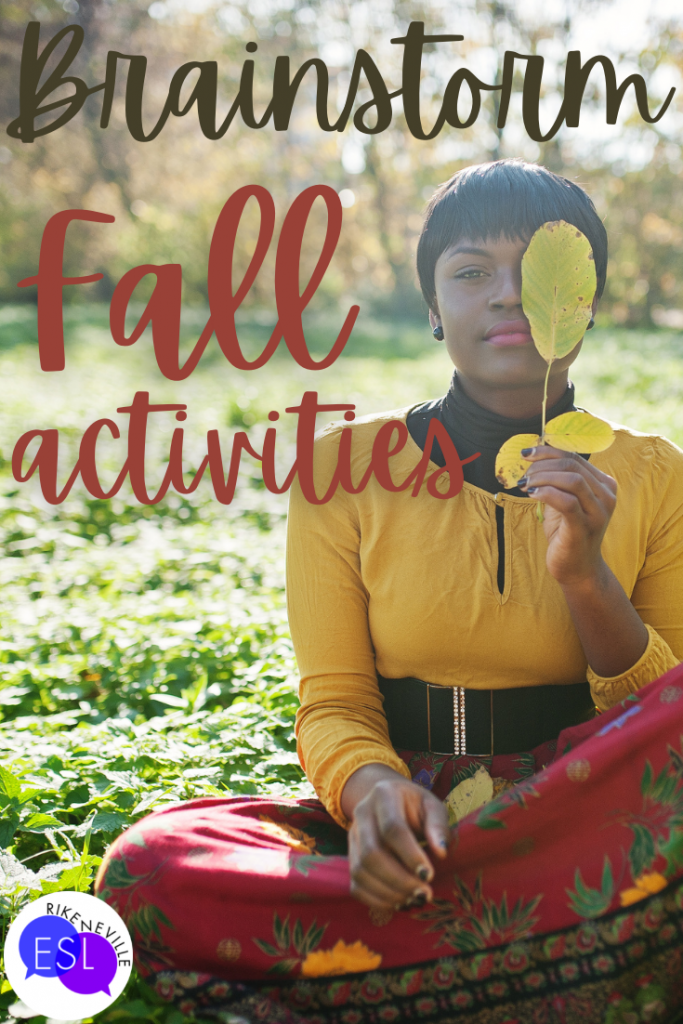
Brainstorm fall activities.
If you have a group that has experienced the fall season, get them to discuss with a partner or two what people commonly do in the fall. What traditions did they follow in their own countries and cultures? What fall activities do they know of that people in other countries/cultures participate in?
If you have photos of yourself as a child participating in traditional fall activities, now is the time to share them. It’s always fun to see what the teacher looked like as a child, and such photos will help get the conversational ball rolling.
Don’t have any such photos or a bit shy about sharing? Take a look at my Fall Vocabulary Digital Presentation.
Some fall activities to introduce to your adult ESL students could include
- collecting autumn leaves
- walking through leaves
- getting lost in a corn maze
- going on a fall foliage drive
- going to a pumpkin patch
A few not-so-fun fall activities that your adult ESL students might need to be aware of include
- falling back to end daylight saving time
- getting a flu shot
- catching a cold
- raking leaves
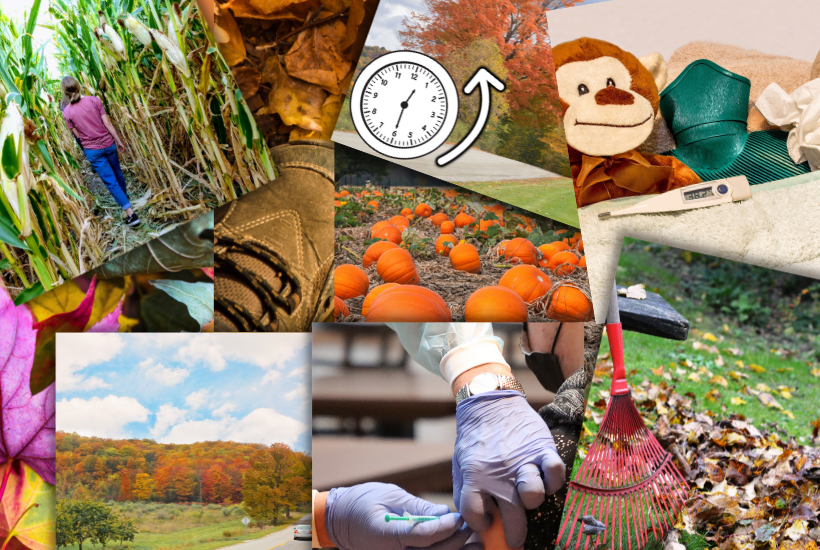
Introduce/Review Specific Vocabulary on a Fall Theme
The fall season is the perfect time for adult ESL students to increase their vocabulary over a broad range of themes that are all connected to the season. For example, what type of clothing is appropriate for fall? What kinds of food are popular? What is the weather like? What are the best known and little known holidays of the fall season? Adult ESL students might also like to talk about fall seasonal decor, festivals, or even the types of chores common to the season. Remember, the appeal of the fall season to adult ESL students is not likely the same as it would be for children.
Do a deep dive into the five senses of fall.
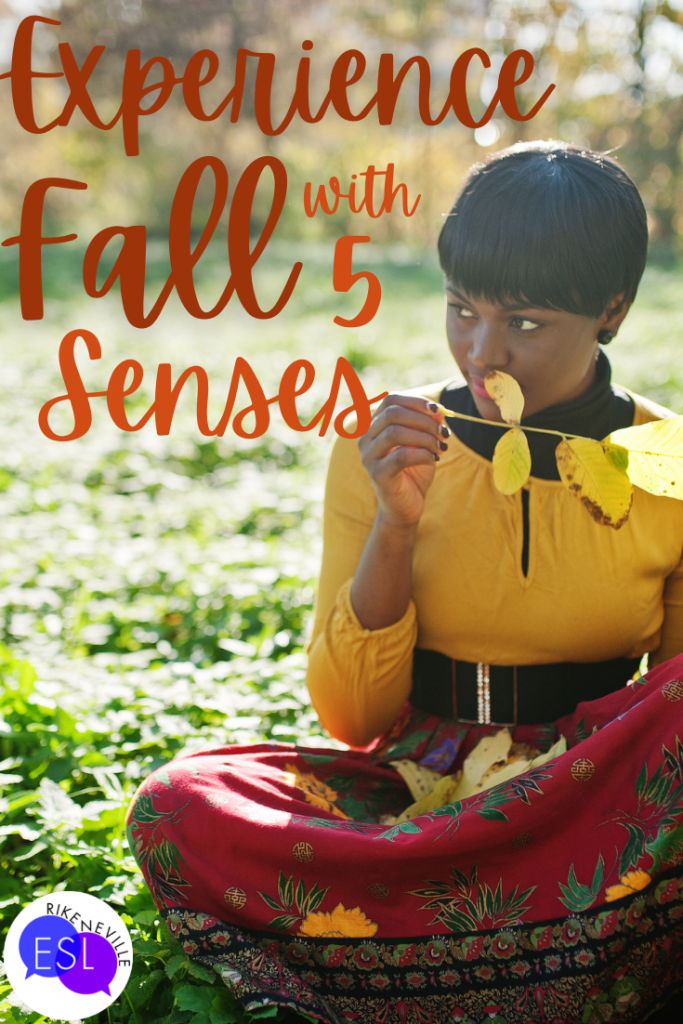
Have you ever heard of petrichor? From what Merriam Webster says about it, petrichor describes that scent that arises from the first rain after a lot of warm, dry weather. If you feel like that is too obscure for your adult ESL students, try wafting some pumpkin spice scent through the room. You can bring in some hot apple cider for everyone to try, get everyone to look for and bring the most colorful leaves they can find, record the sound of walking through leaves and play it back for them.
I liked bringing in a plain cotton pillowcase (easier to manage than a whole sheet) and a flannel one so that students can feel the difference and then we talked about the pros and cons for each.
As much as you can, steer students towards what they should notice about fall. Being in a new country where EVERYTHING is so different can make observing something unique to autumn easy to miss. Invite them to find ways to share their sensory experiences with their classmates.
Challenge their techy creative side.

Show them a couple of short YouTube videos that invoke the feeling that the fall season inspires and challenge them to create their own.
There is a gorgeous one called A Short Film Showing the Beauty of Autumn. I first saw this on a sweltering hot summer day and almost missed the end of it because my glasses got all wet and smeared with tears. The music, oooh~
For something easier to create, they could turn a set of photos into a slide show with music like Autumn Pictures Collection. Or instead of music, they could record their own voice reciting or reading a poem they’ve written or one they know that makes them think of fall. Robert Frost’s Nothing Gold Can Stay somehow always makes me think of fall even though I hear all the seasons in it.
Set the scene for contemplative writing.
Autumn writing prompts give students direction and purpose in writing without being too restrictive. Play music to evoke the emotions of summer giving way to fall or fall relaxing into winter while your adult ESL students are writing. Set out some autumn decor, light a scented candle, pass out mugs of hot chocolate. Before you know it, your classroom will embody hues of hygge to further flavor their writing.
Remember: Don’t make it only about fall activities in your culture.
Sure, teaching ESL includes teaching culture. Sometimes the cultural tidbits are the most fascinating part of a language classroom (speaking from personal experience here). That said, don’t ignore what your adult ESL students can bring to the table.
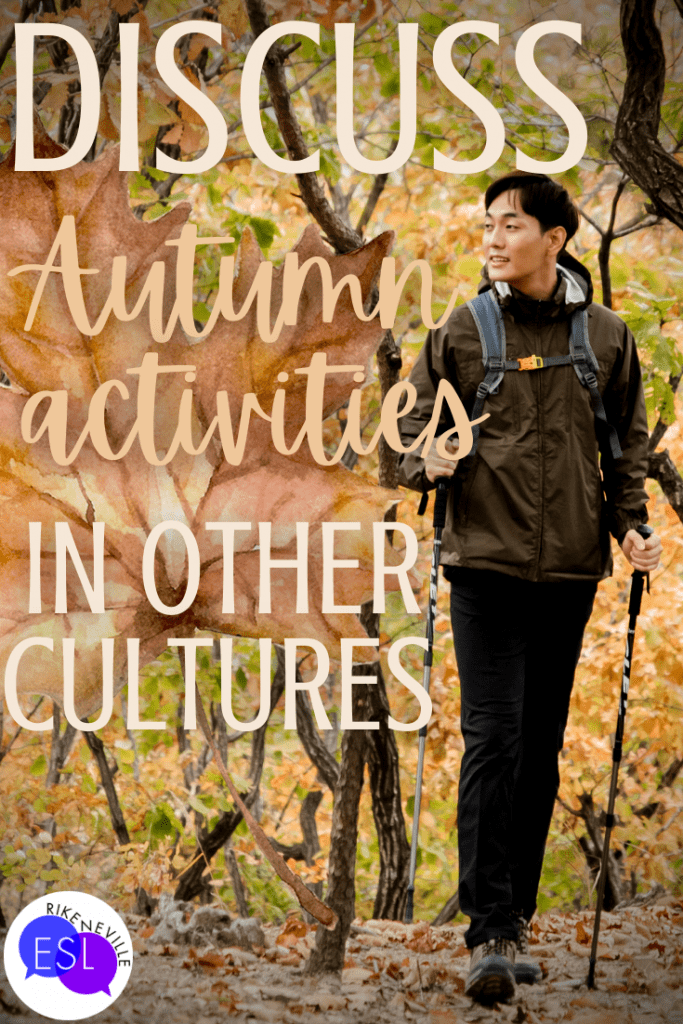
Ask them for recommendations of music that fits their interpretation of the essence of fall. It’ll help them make connections and give you a wealth of music to draw from in future fall-inspired activities in the classroom. Get copies of some of their writing and videos/slide shows along with permission to share with future classes. These can be examples of what to do, but they can also be just what a homogeneous class will love when they don’t have classmates from outside their culture.
If you’ve been taking notes on what they’ve said about fall during any of the previous activities, you’ll have even more ideas for autumn-inspired writing prompts, discussions on fall holidays, and maybe even some recipes you’ll want to try out at home!
Adult ESL Vocabulary Resources for the Fall
I created my line of fall vocabulary resources especially for a class of Saudi students I once had who were enraptured by the cooler temperatures fall promised but hadn’t yet been frozen by a winter season. Some of them were parents who looked forward to showing their children some American cultural activities for the season, and others were excited to try some with groups of friends.
While each resource can stand alone, I recommend first using the Fall Activities Digital Presentation to introduce the activities and vocabulary.
The Fall Vocabulary Introduction BOOM deck is perfect to offer anyone who missed class on the day of the digital presentation or anyone who wants/needs a little more practice in hearing/saying the words.
From there, depending on the levels of your students, any of the Fall Vocabulary BOOM decks (levels 1, 2, 3, & 4 + an intro are available as a bundle and separately) make review fun for students but easy on you. My Fall Vocabulary worksheets include a variety of activities that can be done as solo work, with a partner, or in small groups. Finally, the Fall Vocabulary Bingo is a great way to review or even assess their memory of the vocabulary. NEW: I just added a new fall-flavored resource! How about a set of Fall Facts & Opinions task cards?
More Seasonal Adult ESL
- Winter Activities: The Best Idea I Ever Had for Adult ESL Classes
- 9 Delightful Springtime Activities for Adult ESL Classes

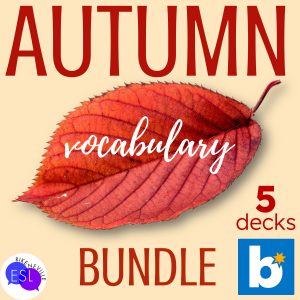
Leave a Reply